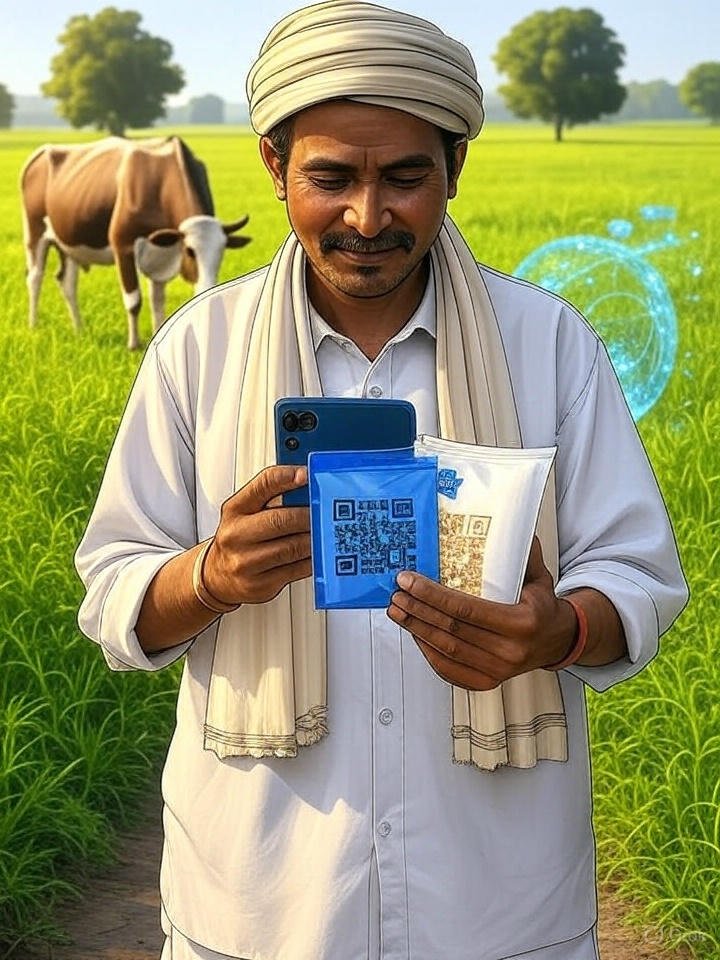By Dairy Dimension Policy Desk
🧾 In Brief
- India contributes 24% to global milk output, but suffers from fragmented supply chains
- 30% of milk in urban India fails quality tests due to adulteration (FSSAI, 2022)
- Traceability innovations using IoT, blockchain, and AI are gaining traction
- Empowering farmers through data access, credit scoring, and inclusion
- Policy and platform collaboration is critical to scale the transformation
In the quiet routine of a Bangalore household, a simple gesture—a mother scanning a QR code on a milk packet—signifies a radical shift in how trust in food is built. She no longer relies solely on brand perception. Instead, digital traceability empowers her to verify the origin, quality, and safety of the milk her child consumes. This shift is not hypothetical; it’s an emerging reality of India’s evolving dairy sector.
A Giant with Fragmented Feet
India is the world’s largest producer of milk, contributing over 230 million tonnes annually, backed by a vast network of over 80 million smallholder farmers. However, this decentralisation creates complexity: milk travels through opaque procurement systems, fragmented transport, and often bypasses robust quality checks.
In contrast to Western dairy industries, which have integrated cold chains and digital records, the Indian dairy industry lacks traceability. For consumers, tracing the origin of milk is still more hope than certainty.
The cost is enormous. A 2022 FSSAI report revealed that over 30% of urban milk samples failed to meet safety standards. According to ASSOCHAM, adulteration and spoilage cause annual losses of ₹10,000 crore to the industry. Moreover, farmers producing premium-quality milk aren’t rewarded, as current systems don’t differentiate their produce.
Traceability: More Than a Tech Fix
The good news is that momentum is building. The National Dairy Development Board (NDDB) and several agri-tech startups are piloting IoT-based sensors, blockchain systems, and AI-powered dashboards that track milk from udder to shelf. These innovations enable a packet of milk to carry a QR code that reveals its entire journey, including animal health records, farmer payments, and cold chain logs.
But traceability isn’t just about food safety—it’s also about farmer empowerment. By participating in digital ecosystems, farmers gain access to actionable insights on nutrition, breeding, and health. Just as crucially, this data trail enhances credit scores, improves insurance access, and increases eligibility for government schemes—a foundational step toward financial inclusion.
Roadblocks on the Path to Transparency
Yet, challenges abound:
- Digital Divide: Many rural farmers lack smartphones or reliable internet access
- Cold Chain Gaps: India has only 36% of the required cold storage capacity, according to the National Centre for Cold Chain Development (NCCD)
- Interoperability: Data platforms—both public and private—don’t yet talk to each other effectively.
For traceability to work at scale, common data standards, open APIs, and public-private partnerships are vital. A unified national dairy traceability protocol, akin to India’s Aadhaar or UPI, could serve as the foundational layer.
What Will It Take?
India has proven its capability in building digital public infrastructure. Schemes such as the Rashtriya Gokul Mission, the e-Gopala app, and livestock genomics databases demonstrate early potential. But scaling these systems will require:
- Policy coherence across Ministries (Agriculture, Food Processing, IT, and Finance)
- Tech for all: Tools designed for 2G phones and low-literacy users
- Farmer-led innovation: Where farmers are not just data points but data owners
The Future Glass of Milk
The transformation is not just technological—it’s cultural and systemic. Imagine a future where every litre of milk is verifiable, value-linked, and virtuous, where a consumer knows not just the cow, but also the conditions it was raised in and how fairly the farmer was paid.
As India scales its dairy exports and domestic demand continues to surge, ensuring traceability will be crucial to maintaining trust. And in the dairy economy of tomorrow, trust is not built by slogans, but by systems.
